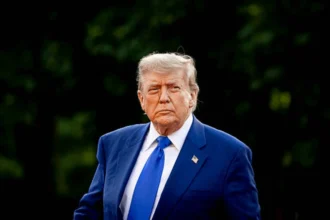Aiming to lower dependency on imports from nations like China, US President Donald Trump has invoked emergency powers to increase domestic production of vital minerals. Based on laws from the Cold War, the executive order tells government departments—including the Department of Defense—to give mining initiatives priority. It also offers financial and technical help to increase the output of vital minerals.
The US is securing its resources as trade tensions rise with China, which controls the world supply chain for several vital minerals. Beijing outlawed the export of some important minerals to the US last year, which drove American businesses to look elsewhere.
“Our reliance upon the mineral output of hostile foreign powers now severely threatens our national and economic security,” the executive order said. “Our national security depends on the United States acting immediately to maximize the production of domestic critical minerals.”
For years, US officials have worried about the reliance on foreign minerals. Over thirty-five minerals have been found by the US Geological Survey to be absolutely vital for both economic stability and national security. Consumer electronics, defense systems, and clean energy technologies all depend on these minerals. The US runs risks in industry, infrastructure, and military operations without a steady home supply.
How Fast Will US Mining and Processing Advance?
The executive directive demands that mining and processing operations have permits accelerated. It also orders the US Department of the Interior to give development of key minerals on government land top priority. The US depends mostly on imports to meet demand even if it has certain vital mineral resources.
Long permission procedures and environmental rules have historically slowed down home mining operations. Still, the new rule seeks to simplify these procedures while preserving ethical mining methods. To improve manufacturing capacity and create innovative extraction methods, the US government is also investigating joint ventures with private businesses.
Trump’s tariffs on many different kinds of imports have heightened trade conflicts with important suppliers like China and Canada. Advanced technologies including batteries, semiconductors, electric cars, and military systems are produced using critical minerals in great part.
The US is also looking at important mineral recycling initiatives to lessen reliance on outside supply networks. Reclaiming materials from obsolete defense equipment, industrial waste, and old electronics, as well as materials from other sources, the nation hopes to build a more sustainable and secure supply of these vital resources.
Why Does Ukraine Play Such a Major Role in US Mineral Deals?
Trump has also mentioned wanting access to Ukraine’s vital minerals. Thursday he indicated that a contract would be signed “very shortly.” “We’re also signing agreements in varied locations to unlock rare earths and critical minerals and lots of other things all over the world, but in particular Ukraine,” he said.
Ukraine is a strategic ally of the US in lessening reliance on Chinese imports since it boasts notable amounts of titanium, lithium, and other rare earth metals. The sectors of aerospace, military, and renewable energy depend on these minerals. The US hopes to guarantee a long-term supply of these priceless resources by deepening financial connections with Ukraine.
Apart from Ukraine, the US is under negotiations on a possible agreement with the Democratic Republic of Congo over its enormous supply of valuable minerals. Cobalt, a fundamental component of rechargeable batteries used for electric vehicles and other green technologies, is produced somewhat extensively in this nation. Securing a consistent supply is hampered, nevertheless, by questions regarding moral mining methods and violations of human rights in the area.
Why did Trump show curiosity about Greenland’s resources?
The US President has also mentioned acquiring Greenland, a Danish province with semi-autonomy that boasts an abundance of important minerals. Denmark opposed the concept, but Trump’s government keeps looking for means of acquiring Greenland’s vital mineral resources.
Essential for high-tech sectors and military uses, Greenland’s enormous natural resources include rare earth elements, uranium, and zinc. New mineral exploration and extraction prospects are arising as Arctic ice melts in response to climate change. The US wants to be visible in the area in order to offset Russian and Chinese sway.
Apart from mining, Greenland’s location provides possible military benefits. Key site for missile defense and early warning systems, the Thule Air Base in Greenland is already run by the USA. Improving national security objectives could be further advanced by strengthening financial connections with Greenland.
What effects might Trump’s Critical Minerals Strategy have?
The growing production of key minerals both domestically and internationally has geopolitical and economic ramifications. Reducing reliance on imports helps the US protect its supply chain and keep technological leadership in sectors such as consumer electronics, defense, and renewable energy.
But the drive for more mining has also brought environmental issues and Indigenous land rights questions front and center. Along with other ecological effects, mining activities can destroy habitats and contaminate water supplies. Although the government has underlined the significance of using sustainable mining techniques, it is still difficult to balance environmental protection with economic development.
Furthermore, there is growing worldwide rivalry for rare metals. Using its control over important resources to get strategic and financial benefits, China keeps taking front stage in the world market. The US has to negotiate complicated economic ties while finding other supplies of these basic commodities.
Modern technologies and defense depend on crucial minerals, hence the US is acting aggressively to guarantee its supply chain and lower reliance on foreign powers. The success of Trump’s approach will rely on efficient implementation, worldwide cooperation, and sustainable mining methods as demand for these commodities keeps rising.








